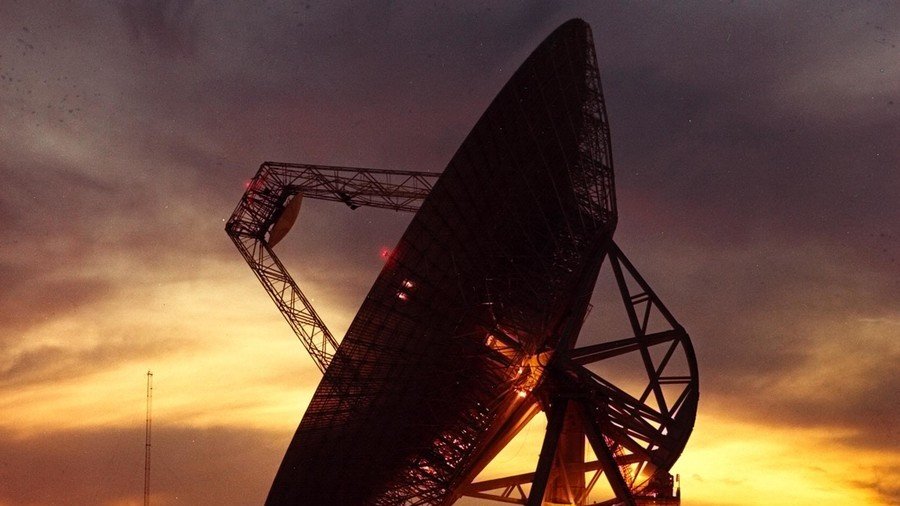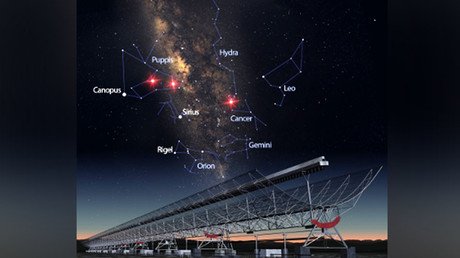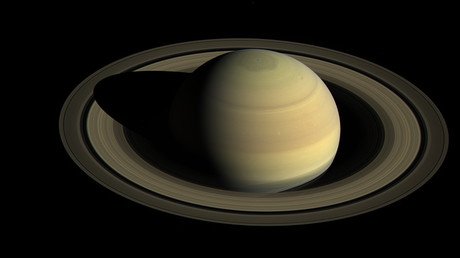Fast radio bursts: What are these ‘insanely powerful,’ unexplained signals from space?

March has been a landmark month for fast radio bursts with three of the unexplained signals from outer space picked up by satellites, including the strongest one ever recorded. But what’s really behind the mysterious phenomena?
The bizarre blasts can emit as much power as 500 million suns but they last only a few milliseconds and arrive without any warning. This makes them impossible to predict or trace to a source.
READ MORE: Alien hunters SETI crowdfunding campaign to ‘watch all of the sky all of the time’
They were first noticed in 2007 when the ‘Lorimer burst’ was discovered in archived data from 2001. Since then they’ve been detected from 33 sources in total. In a dramatic uptick, three new bursts were picked up by the Parkes radio telescope in Australia this month. The first came on March 1, the second came just over a week later on March 9 and the third followed quickly after that on March 11.
The episodes are labelled FRB 180301, FRB 180309 and FRB 180311 in accordance with the convention of naming the bursts after the date on which they occurred. FRB 180309 is particularly interesting because it is by far the strongest burst that has been detected to date, with a staggering signal-to-noise ratio of 411. The previous strongest FRB had a signal-to-noise ratio of 90 and many of the bursts had ratios of less than 20.
“The burst on 9 March was by far the brightest one we’ve seen,” Professor Maura McLaughlin, from West Virginia University, told the New Scientist.
The signals almost always occur as one-off events, with just a single burst recorded from a single location. However, on one occasion in November 2012 signal FRB 121102 repeated itself. Some researchers believe that all of them do and we have just wait long enough until we observe it.
Scientists hope such observations will help finally crack what exactly is causing the strange astrophysical phenomena, about which remarkably little is still known. As recently as last April, researchers confirmed that the signals are from outer space – before that some thought that local interference was tricking astronomers.
A widely-held explanation for the fascinating signals remains elusive. Because of their remarkable brightness, some experts believe they must be produced by incredibly powerful events.
“FRBs travel billions of years to get to us, and only last a few milliseconds, suggesting the emission mechanism is short-lived. For us to detect them clearly after such a long journey, they have also to be insanely bright,” Danny Price of SETI explained.
The leading theory suggests that they are caused by cataclysmic events like the collision of very dense objects, such as black holes or neutron stars. However, others have offered even more outlandish explanations. One study even went as far as proposing that they might be powering ‘solar sails’ on a colossal alien spacecraft.
If you like this story, share it with a friend!















